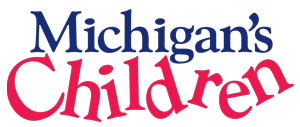A Much Needed Conversation about Child Care
March 16, 2015 – Last week, Michigan’s Children partnered with the Early Childhood Investment Corporation and several other state advocacy partners to organize opportunities to strategize action around some very important services that touch the lives of families with babies and toddlers. With national assistance from Zero to the Three, The Ounce of Prevention Fund, and the IDEA Infant Toddler Coordinators Association (IDEA ITCA), the sessions focused on the current landscape of the home visiting, child care, and Early On systems in Michigan, and engaged attendees in identifying necessary steps toward improvement. Today, I’m going to talk a bit more about the session focusing on child care and some of what that means for Michigan’s Children’s work in the coming months.
First and foremost, a state-level conversation about how to improve the child care system in Michigan hadn’t taken place in years, which is evidenced by the significant challenges faced by that system; and participants, including Michigan’s Children, have felt that the discussion was long overdue. A significant part of the conversation included reframing child care from a welfare and low-wage workforce support to an early education priority. The Governor’s third grade reading proposal included child care improvements, reflecting this shift within the administration that many view as a victory for child care, but the connections are not often recognized by other policymakers.
At Michigan’s Children we believe that child care is an essential part of two-generation strategies to help children thrive while their parents can get ahead in life; and that talking about child care from an education perspective – knowing that decades of research tells us that children’s success is strongly connected to their parents’ success – is critical. To take it one step further, this also means that we need to be supporting parents’ education. This means allowing parents to access child care assistance while in adult education programs (think, family literacy), as well as allowing adult education to be an allowable activity for families to receive cash assistance. But I digress.
Another key piece of any discussion to improve child care in Michigan is the need to restructure the child care subsidy system to better match market demands. This would mean a shift from the current hourly reimbursement rates, which have not enabled consistent care, to part-time or full-time payment rates. If we want to get serious about child care being an education program, then we must support what research consistently shows us impacts child outcomes in child care – quality interactions between the teacher and child which is dependent on continuous, consistent, quality care. This type of care is not sustainable with an hourly payment structure – we can’t keep paying child care subsidies like we would a babysitter, but rather pay for it the same way we pay for preschool and k-12 education.
Fortunately, the Governor’s FY2016 budget includes some improvements to the child care system that will support what the research shows us. And fortunately three of the four recommendations were already approved by the Legislature via supplemental budget to begin implementation in the current fiscal year. His proposals include:
[bulletlist]- Funding to allow families to access 12-months of continuous child care subsidy that supports the research showing that consistent care matters for children and families and essential for child care providers trying to maintain their businesses.
- Additional tiered reimbursement acknowledging that higher quality child care is more costly.
- Allowing families to maintain their subsidies as they begin to earn a little bit more money to not have to suddenly shoulder expensive child care costs on their path to economic stability.
- Funding to hire additional licensing consultants to ensure that child care programs are maintaining basic health and safety standards. This is the only recommendation that was not included in the supplemental and must be included in the FY2016 budget.[/bulletlist]
To learn more about the Governor’s budget recommendations including the third grade reading details and child care, read our Budget Basics. And stay tuned for a future blog on the Early On session.
-Mina Hong
